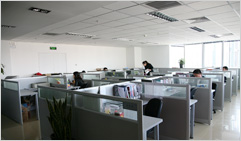P.R.C Medical System
 Since the founding of the People's Republic of China, the goal of medical programs has been provided with care to every member of the population and to make maximum use of limited health-care personnel, equipment, and financial resources. The P.R. China’s medical health-care system has dramatically improved the health of the people, as reflected by the remarkable increase in average life expectancy from about thirty-two years in 1950 to sixty-nine years in 1985. Health care in urban areas was provided by paramedical personnel assigned to factories and neighborhood health stations. Along with a medical system of national, provincial-level, and local facilities, the ministry regulated a network of industrial and state enterprise hospitals and other facilities covering the health needs of workers of those enterprises.
Since the founding of the People's Republic of China, the goal of medical programs has been provided with care to every member of the population and to make maximum use of limited health-care personnel, equipment, and financial resources. The P.R. China’s medical health-care system has dramatically improved the health of the people, as reflected by the remarkable increase in average life expectancy from about thirty-two years in 1950 to sixty-nine years in 1985. Health care in urban areas was provided by paramedical personnel assigned to factories and neighborhood health stations. Along with a medical system of national, provincial-level, and local facilities, the ministry regulated a network of industrial and state enterprise hospitals and other facilities covering the health needs of workers of those enterprises.  Reform of the medical care system featured increased government investment, stricter professional supervision and reduced medical costs for citizens. The proposal aimed to tighten management on medical services, strengthen training and medical ethics to improve the quality of medical services, ensure medical security and form harmonious relations between doctors and patients. The government also plans to continue its extension for the network of healthcare into rural areas and to provide safe, efficient, convenient and reasonably priced public health services for citizens in urban areas. Health care reforms are in response to widespread public dissatisfaction with the current medical system.
Reform of the medical care system featured increased government investment, stricter professional supervision and reduced medical costs for citizens. The proposal aimed to tighten management on medical services, strengthen training and medical ethics to improve the quality of medical services, ensure medical security and form harmonious relations between doctors and patients. The government also plans to continue its extension for the network of healthcare into rural areas and to provide safe, efficient, convenient and reasonably priced public health services for citizens in urban areas. Health care reforms are in response to widespread public dissatisfaction with the current medical system.My Questions *We welcome and appreciate your questions & reviews



